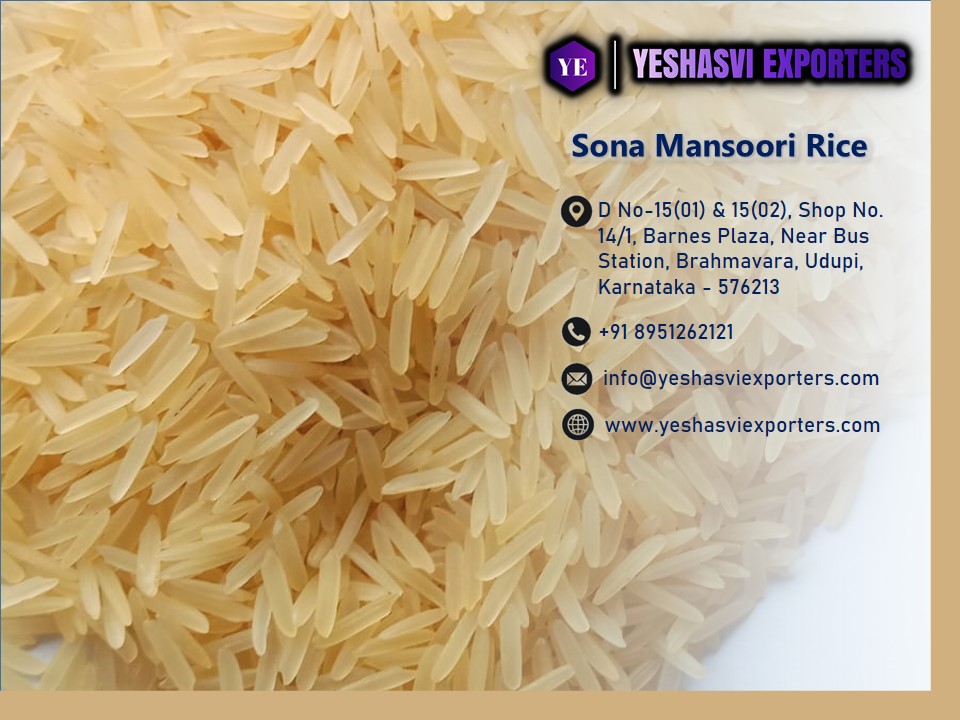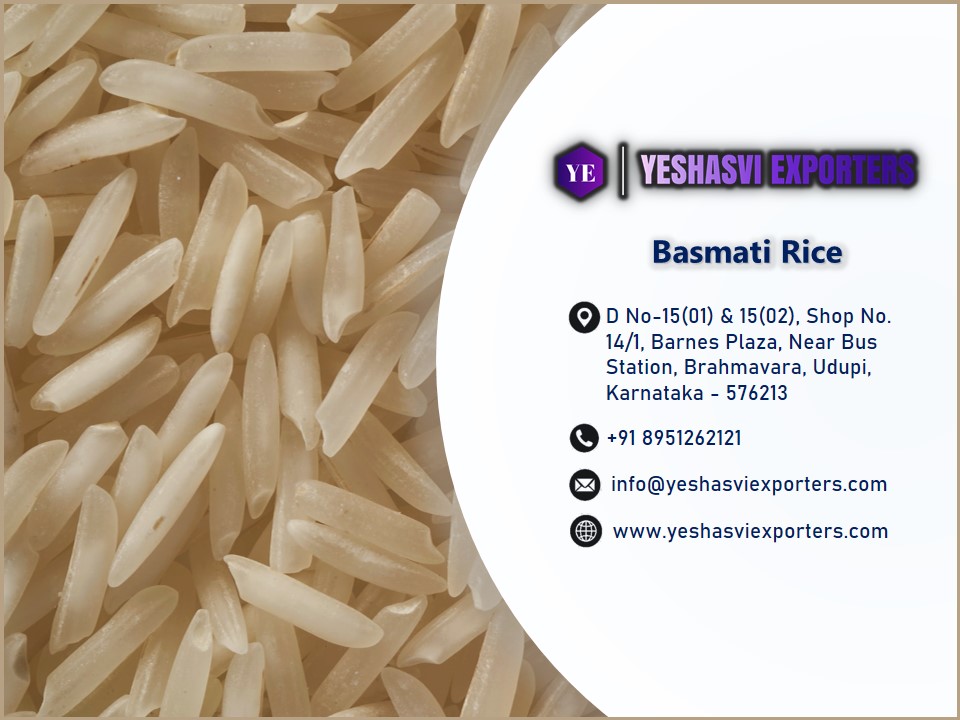Rice:
Basmati white rice is a popular and aromatic long-grain rice variety, native to the Indian subcontinent. With its unique fragrance and distinct flavor, Basmati rice has garnered international attention and demand. Apart from its exquisite taste, this rice variety also boasts numerous health benefits, including its low glycemic index (GI) - an essential factor for people with diabetes and those looking to maintain a healthy diet. In this article, we will delve into the details of the glycemic index of Basmati white rice, its health benefits, and why importing it from India is an excellent choice for your business.
- Understanding Glycemic Index: The glycemic index measures the impact of a carbohydrate-containing food on blood sugar levels. Foods with a high GI cause rapid spikes in blood sugar, while those with a low GI provide a slow and steady release of energy. Basmati white rice has a lower GI compared to other rice varieties, making it a healthier option for people with diabetes or those looking to maintain stable blood sugar levels.
- Health Benefits of Basmati White Rice: In addition to its low GI, Basmati white rice is packed with essential nutrients like vitamins, minerals, and dietary fiber. It is a good source of B vitamins, which are crucial for energy production and maintaining a healthy nervous system. The dietary fiber in Basmati rice aids in digestion and promotes a feeling of fullness, helping to prevent overeating and support weight management.
- Authentic Indian Basmati Rice: India is the largest producer and exporter of Basmati rice globally. Importing Basmati white rice directly from India ensures you receive an authentic product with superior quality and taste. The ideal climatic conditions and fertile soil of the Indian subcontinent contribute to the distinctive aroma and flavor of Indian Basmati rice, setting it apart from other rice varieties.
- Cost-Effective and Reliable Supply: Importing Basmati white rice from India offers businesses a cost-effective and reliable source of high-quality rice. India's well-established rice production industry ensures a consistent supply of Basmati rice, which can help you meet the growing demand for this popular grain in your market.
- Diversifying Your Product Portfolio: By adding Indian Basmati white rice to your product offerings, you can cater to the growing health-conscious consumer base and expand your market reach. The unique taste and health benefits of Basmati rice can help you differentiate your brand and attract new customers.
For a vast majority of the world's population, especially in Asia, rice is a type of cereal grain and a staple diet. With billions of people dependent on it as their main supply of carbs, it is the most extensively consumed staple meal in the entire globe.
Depending on the species and the locality, rice is often farmed in either dry fields or flooded paddies. The plant, which can reach heights of several feet, yields long, slender grains that are gathered and prepared for ingestion.

Basmati white rice glycemic index:
The glycemic index of basmati white rice: Basmati white rice has a moderate to high glycemic index (GI), ranging from 50 to 58. The glycemic index determines how quickly blood sugar levels would rise after consuming a product that contains carbohydrates. those with a high GI (above 70) can cause blood sugar levels to rise quickly, whereas those with a moderate to low GI (below 70) can cause blood sugar levels to rise more gradually. Basmati white rice has a lower GI than other types of white rice because it contains amylose, a type of starch that takes longer for the body to convert to glucose. However, it still has a moderate to high GI and can considerably boost blood sugar levels, especially for those who are diabetic.
Basmati versus jasmine rice:
The popular long-grain rice varietals Basmati and Jasmine are very different from one another in terms of taste, aroma, texture, and cooking techniques.
odor and taste
While Jasmine rice has a sweet aroma and a mildly nutty flavor, Basmati rice has a floral scent and a nutty flavor.
Texture:
While Jasmine rice is renowned for its shorter, thicker grains that tend to slightly clump together, Basmati rice is recognized for its longer, slenderer grains that are fluffy and separate after cooking.

Cooking Technique:
The absorption method, which comprises cleaning the rice and cooking it in a certain ratio of water to rice until all the water is absorbed, is frequently used to make both Basmati and Jasmine rice. However, jasmine rice normally needs a little bit more water and a longer boiling time.
Nutrition:
Jasmine and Basmati rice are both superior providers of carbohydrates, although Basmati rice has a slightly lower glycemic index.
Cultural Symbolic Value:
Basmati rice is primarily grown in India, whilst Jasmine rice is typically grown in Thailand.
Jasmine and Basmati rice have unique properties and are frequently used in a variety of dishes. Everything ultimately depends on the specific cuisine being presented and on individual preference.
Sona Masoori, Basmati, and other commonly used varieties of rice all have distinctive flavors, fragrances, textures, and cooking needs.
Aroma and flavor:
- The flavor and scent of basmati rice are nutty and flowery.
- The flavor and scent of Sona Masoori rice are delicate and somewhat sweet.
- The flavor and scent of jasmine rice are sweet and somewhat nutty.
Texture:
- Basmati rice is renowned for its long, elongated grains that separate after cooking and are fluffy.
- Short, light grains of Sona Masoori rice has a tendency to slightly stay together after cooking.
- Shorter, thicker, and somewhat clumpy grains make up jasmine rice.
Cooking Technique:
The absorption process, which entails rinsing the rice and then cooking it, is generally used to create basmati and sona masoori rice.
Three widely used types of rice Basmati, Sona Masoori, and Basmati have different flavors, aromas, textures, and cooking requirements.

Sona masoori rice benefits:
Popular Sona Masoori rice is a type of rice with South Indian roots that is frequently used in Indian cooking. Here are a few advantages of eating Sona Masoori rice:
- Low in Fat: Sona Masoori rice is an excellent source of complex carbs and a low-fat grain. It also digests well and is naturally devoid of gluten.
- Rich in nutrients: Sona Masoori rice is full of vital vitamins and minerals like thiamine, niacin, and vitamin B6, all of which are crucial for overall health.
- Lower glycemic index: Sona Masoori rice has a lower glycemic index than other varieties of rice, which suggests that it may help control blood sugar levels and minimise the risk of developing diabetes.
- Sona Masoori rice is a good source of energy and can provide you long-lasting energy throughout the day.
- Promotes Digestive Health: The high dietary fibre content of Sona Masoori rice can help maintain the good digestive health by controlling bowel movements and preventing constipation.
Usage of sona masoori:
Sona Masoori rice is a versatile grain that may be used in a wide range of meals, including pulao, idlis, and biryanis.
While Sona Masoori rice may offer a number of health advantages, it should nevertheless be eaten in moderation as part of a healthy diet. To ensure the greatest nutritious value, it's also critical to buy premium Sona Masoori rice that hasn't been polished.
How rice importing from India could benefit your business!
For other nations, importing rice from India can have a number of advantages. The following are some major benefits of importing rice from India:
Cost-effective: Since India is one of the world's top producers of rice, it is able to supply rice at costs that are favorable to consumers. For other nations, importing rice from India can be a cost-effective way to satisfy the demand for rice at a reduced price.
Variety of rice types: Both basmati and non-basmati rice are produced in large quantities in India. Other nations may be able to take advantage of this variety and provide their clients with a wide selection of rice types by importing rice from India.
The Indian government has strong guidelines and standards in place to guarantee the nation's production of rice, including its quality and safety. Other nations may feel more confident in the quality of the commodity they are importing if they purchase rice from India.
vast production capacity: India has a vast capacity for producing rice, which enables it to deliver a steady flow of grain all year round. Even in the off-season, importing rice from India can assist other nations maintain a consistent supply.
Benefits to health: Rice is a staple meal in many nations and has a number of advantages to health, including being an excellent source of carbohydrates and having a low-fat content. Rice imports from India can assist other nations in providing for their citizens' nutritional requirements.
In conclusion, purchasing rice from India may be economical and provide a large variety of rice cultivars, rigorous criteria for quality, a steady supply, and advantages for other nations' health.